

Is the eradication of shelf life in commercial storage processes creating an urban infrastructure that ultimately only serves corporate interests? In this essay by Clare Lyster, the potential society-changing effects of how items are purchased, shipped, and processed are examined on a macroscopic level.
In "Storage Flows: Logistics as Urban Choreography," Clare Lyster notes that the popularity of Just-In-Time inventory processes, coupled with greater robotic automation in traditional shipping companies like FedEx and UPS, is helping to further empower massive online retailers like Amazon. Will cities evolve from a mixture of public and private space to nothing more than ugly storage racks writ-large?Essentially, by creating a system that never stops, corporations can constantly turn over more and more items, rendering any old school companies that rely on a certain notion of "shelf life" obsolete. The corporations are also enabling each other; for example, why ship a Toshiba computer that needs repair all the way back to the manufacturer, when it's easier to have a dedicated pool of IT workers housed within a major UPS shipping hub repair the device when it arrives? More to the point, with the flow of commerce concentrated in fewer hands, will cities evolve from a mixture of public and private space to nothing more than ugly storage racks writ-large? Lyster examines this intersection of corporations, technology, and urban infrastructure to fascinating (and chilling) effect.

Storage Flows: Logistics as Urban Choreography
by Clare Lyster
Typically, when we think of storage, we think of yellowing pages and mothballs. We think of putting things away for long periods of time—months, decades, or even centuries. So, too, we think of specific locations to accommodate storage—a damp cellar, a dusty attic, an old trunk, a filing cabinet, a shed, a storeroom. At the scale of the city, we think of storage space in the form of purpose-built depositories. We might think of the loft warehouses of the industrial city, which often aggregate into larger urban areas—Soho in New York City, HafenCity in Hamburg, At the scale of the city, we think of storage space in the form of purpose-built depositoriesand the Baltic Triangle in Liverpool being paradigmatic examples of storage districts. We might also think of huge stockpiles of commodities superimposed on old industrial waterfronts or sprawling stockyards. Or of industrial monuments harborside, evidence of which still adorn the great Rust Belt cities in the United States. A case in point being the iconic grain silos in Buffalo, New York, which architecture theorist Reyner Banham compared to the Egyptian pyramids. In summary, up until now, whether at home or in the city, we think of storage as the collection and shelving of items in designated places where they accumulate until needed.
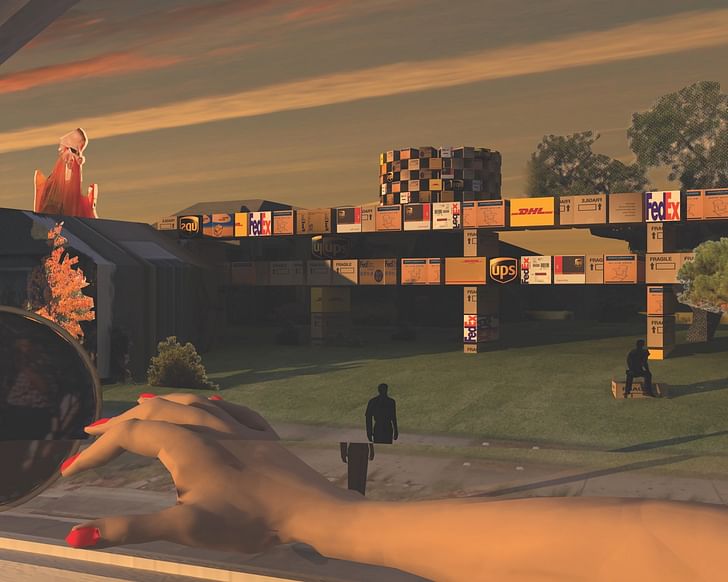
But in the post-Fordist city of today, where inventories are expertly synchronized across vast territorial scales in ever-decreasing timeframes, this practice of accumulation is inverted. In the logisticalization of contemporary supply chains, shelf life is planned to be as brief as possible—storage does not accumulate in one place; rather, it flows.
The concept of storage as a vector of flow has been prevalent as long as there has been trade. The transfer of goods from their point of production to consumers in a safe, profitable, and timely fashion across regions and continents has shaped urban centers in both ancient and modern times. Technological innovation, in the form of faster distribution networks and scientific management systems (coach to steam ship to railroads to the assembly line), has also had an enormous impact on the flow and stowing of goods. However, since the 1970s a new species of exchange networks has evolved, one that accelerates flow beyond anything we have witnessed previously: logistics.
Characterized as time-space technologies that supervise and expedite production routines and global supply chains, logistics are increasingly controlled by a series of large corporate actors. In this context, storage is defined as both the stuff and the procedures of new material and data flows of digital commerce: the supply of commodities from producers to retailers to customers in online retail (Amazon); mobility infrastructure to manage the shipping and distribution of goods (DHL, FedEx, UPS); social media and entertainment services (Facebook, Netflix, Redbox); and communication software that source, map, and reserve objects and spaces in sharing networks (Airbnb, Uber, Zipcar). Here, storage is not understood as putting things away for safekeeping or as a depository of artifacts gathering dust; rather, it is a dynamic, temporal system.
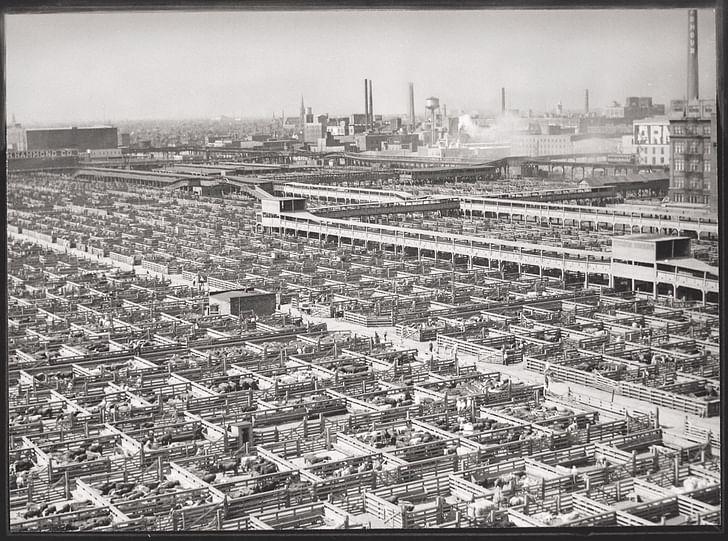
Designing and coordinating systems of flow is the central task of logistics; and in the commercial realm, logistical thinking deploys time-space planning methods to optimize operational flow and to cut costs. Logistics deploys a multiscalar approach to accelerate the supply and distribution of goods, rendering storage flow as much a choreographic strategy as it is a geospatial one. This involves strategizing flows over long distances (air cargo and container shipping) as well as more tactical local transfers (doorstep drone delivery). All is aided by abstract, rational procedures performed by algorithms, scanners,Piggybacking on other systems to optimize flow by collapsing supply and distribution into one seamless system has many implications for the city programmable robots, and other info-industrial technologies from smart tags and hand-held tracking devices to radio-frequency identification (RFID) systems. These procedures have all descended from the bar code and just-in-time (JIT) management procedures that together transformed inventory management and shipping beginning in the mid-1970s. Such transportation systems and scientific processes work in tandem with other logistical paraphernalia (automated warehouses and smart vehicles) to ensure that merchandise is never in one place for too long. The perpetual flow of stuff not only reduces the gap between supplier and consumer but prohibits the buildup of surplus cargo on sites along the way. The premise of logistical flow is to shrink shelf life—or, better still, eliminate it altogether. To fully comprehend contemporary mechanisms of flow, we need to explore the manner in which logistics shrewdly appropriates other external networks and spaces as a means to enhance its supply chain operations. For example, many logistical networks hijack familiar forms of urban infrastructure to further conquer the spatiotemporal gap between supply and demand. Piggybacking on other systems to optimize flow by collapsing supply and distribution into one seamless system has many implications for the city, changing how distribution typologies appear in the urban landscape and thus the landscape itself.

Space Invaders
Storage space is fragmenting into the architectural and urban fabric of the city. Redbox, the Illinois-based DVD rental company, places vending machines in supermarkets, restaurants, and transportation centers. There are 35,000 locations in the United States and a typical kiosk holds 550 to 600 DVDs. An interior carousel holds the DVDs, which are retrieved by a robotic arm when a customer makes a request directly at a machine or remotely via an app that helps locate the closest kiosk. While Redbox pays rent for the kiosks, it remains an efficient and profitable way to colonize the city. Storage flows are no longer conceived as industrial processes out of public view; rather, they inhabit everyday spacesRedbox’s business longevity is questionable—one wonders how long it will last given the popularity and convenience of streaming media—but the current dispersion of kiosks affords a simultaneous multiplication and rotation of supply, enabling inventory to proliferate across as many locations as possible. Distribution is also aided by user patterns (making Redbox self-organizing in part), since customers can rent and return DVDs at any location. Zipcar, along with other car-sharing networks like car2go and Greenwheels, operates according to a similar tactic. Rather than construct a series of purpose-built holding facilities, Zipcar disperses its stock of cars in small clusters in public parking areas adjacent to public transportation sites, university campuses, condominiums, or supermarkets and cultural institutions. There are 11,000 Zipcars worldwide, and as the company website proclaims, “We’re in all the nooks and crannies of the city.” No longer confined to a centralized building or district, storage is everywhere.
Storage flows are no longer conceived as industrial processes out of public view; rather, they inhabit everyday spaces. While the global shipping network FedEx invests heavily in its own facilities, its real-life support remains the infrastructure of the city. FedEx has approximately 40,000 drop boxes in building lobbies, supermarkets, airports, and street corners in the United States alone. FedEx locates its sorting facilities at airports (375 to be exact) and its fleet of 48,000 trucks is a familiar sight on highways. Moreover, its takeover of the copy shop chain Kinkos, in 2004, enabled further infiltration into the city (there are now 1,775 stores) by providing an important public interface in the form of a storefront for its shipping operations. Backstage processes (packing, shipping, and delivery) now infiltrate the public realm; global (storage) networks have become ingrained in our work and lifestyle routines.
Storage flows seek to rendezvous with available hosts. In 2014, Amazon installed lockers (pick-up points) in London tube stations and adjacent parking lots so that customers could pick up products ordered online while commuting. The local government body Transport for London (TfL) has since expanded the service of renting tube space, including lockers for other retailers. The initiative, part of TfL’s “click and collect” project, was thought to broaden the tube network (by offering other services in addition to transportation) and generate revenue that could be put back into transport investments. When a package arrives, customers receive an e-mail notification with a pin code to open the locker, whose location was preselected by the customer at the time goods were ordered. Lockers are also available in supermarkets, universities, and libraries; in the United States, Amazon has installed lockers in 7-Eleven stores. Storage is symbiotic.
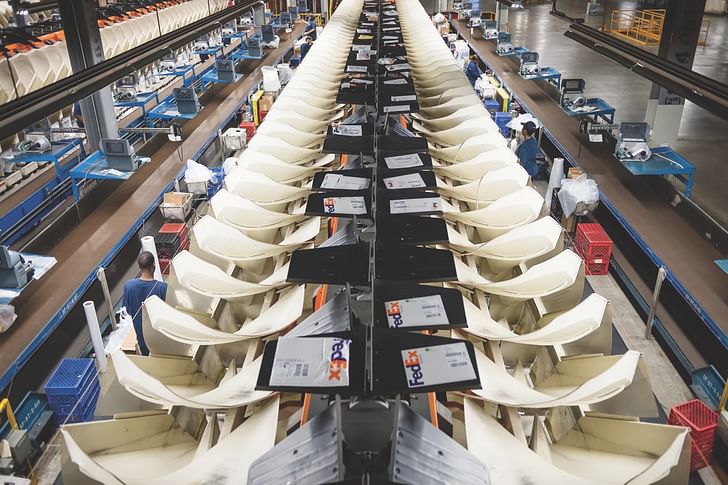
Storage flows are an amalgamation of physical and virtual space. In South Korea, Tesco’s Homeplus has installed virtual shopping aisles in 22 public spaces, including bus and train stations. They were introduced in Seoul in 2011, when the company anticipated that busy lifestyles necessitated new ways to shop. Using a smartphone and a QR code, customers order food from a vertical interface akin to a digital mural comprised of about 500 products. By 2015 it had become the most popular retail app in Korea, which was when Tesco sold the company to Korean investors. In August 2012, Tesco tested the system at Gatwick Airport; customers awaiting departure could order groceries and synchronize delivery for when they returned home. Following this, Peapod, the Illinois-based food delivery network, attempted similar pilot projects at train stations in Boston, Chicago, Philadelphia, and Washington, DC. Storage is literally coming out of a physical box (in this case, the supermarket) and is instead manifested as a platform—a hybrid interface that integrates architectural space with digital processes and their attendant artifacts.
Storage flows can also be characterized by internal synergies—that is, alliances with other logistical partners. For example, Uber delivers goods for Amazon, while Amazon holds Netflix data in Amazon Web Services, its Cloud-computing platform. Dell products are kept at UPS shipping facilities to expedite customer orders, and IT employees at UPS service Toshiba products, since it’s quicker to fix computers at the point of distribution than to send them back to the factory. While sharing infrastructure seems to make economic sense, landscape architects Alan Berger and Charles Waldheim argue that the “symbiotic partnerships” that Not only does this practice impact design by serving to downgrade assets...but it fobs off production costs elsewherefacilitate offloading material inventory into the supply chain itself (computer equipment to UPS, in the case of Dell) has the effect of outsourcing production functions (and costs) onto other systems and infrastructure. Not only does this practice impact design by serving to downgrade assets (capital costs are minimized or even written off as operational expenses, so it’s no wonder the spaces of logistics are ugly, dumb, and cheap) but it fobs off production costs elsewhere, even onto the public. At a very simple level, think of the maintenance costs of the wear and tear on the US national highway system as a result of shipping vehicles (not to mention Uber, the super-synergist bar none and a transportation company without its own cars!). While the ethical and economic consequences of logistical flows is an important discussion to have, the spatial implications of these synergies—in particular, how they keep things moving—are the focus here, since logistical partnerships are reshaping perceptions of storage space in the built environment.
Urban Choreography
In a bid to optimize circulation flows, logistical networks are depositing their bits and goods alongside every form of urban infrastructure or inventing new hybrids where none exist. In moving beyond the confines of its own spaces and procedures—and collaborating with urban infrastructure and other partners—storage is no longer premised on arresting flow in a purpose-built space (a loft or a warehouse) but rather is presented as a fluid, open, and porous urban field. For example, new nodal points—from Zipcar clusters to virtual storefronts and Amazon lockers—illustrate how distribution landscapes at the microscale are infiltrating traditional peer-to-peer networks. While storage flows of bygone eras also relied on networks to serve warehouses and ports, they differed from today’s flows in three distinct ways. First, in earlier times, the act of storing and moving goods was predominantly treated in-house; second, storage and distribution, while intrinsically related to each other, were conceived as separate components within the supply chain, that is, a series of movements and stoppages, rather than a total, integrated process; third, never before have there been so many intermediary points along the trajectory of flow to facilitate public access (even when your FedEx package is out of sight, you have the option to monitor and track it every step of the way). No longer having to reach a terminus at the end of the flow operation, storage is now continually visible, mapped, and accessible because logistics focus on moving material into the space of distribution rather than leaving it on the shelf. Storage and flow have merged into a single space.
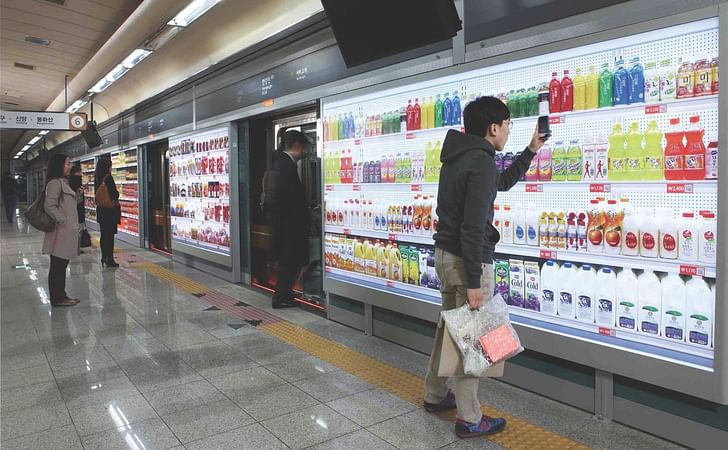
Storage flows—when defined as microdistribution points, integrated platforms, and shared infrastructures—are examples of spaces where the processes of globalization become clearly tangible in the landscape of the city. Too often we are blind to the industrial regimes that serve our lifestyles, but these new storage hybrids transport the abstract procedures of the “space of flows” into the city and by extension into human consciousness. They are mediators between the elusive phenomena of post-Fordist production and our everyday routines.
It would be foolish to forget that large, purpose-built facilities are not predominant in the landscape of logistics. Aerial views of peripheral sites alongside transportation infrastructure illustrate acres and acres of big-box facilities, and it’s not unusual for a logistics facility to be in the range of one million square feet. (Target’s import facility in Lacey, Washington, is two million square feet.) So, too, it would be a misnomer to imply that storage has completely fragmented—large-scale storage clusters, comparable to those in the industrial city, also still exist. Already by 1998, within a six-mile radius of the airport and FedEx World Hub in Memphis, Tennessee, there In all cases, storage is less about space and more about timewere 130 million square feet of storage occupied by a range of corporations and retail franchises. Yet even here, the premise of many of these large warehouse facilities is to shuttle the product onward as quickly as possible. Dominated by industrial mobility systems—from robots to conveyors—everything works in unison to keep the flow circulating. FedEx scans a package only five times so as not to interrupt its trajectory through the sort center, and, on average, a package remains at every facility for 90 minutes. Amazon uses proprietary algorithms to devise optimal pick paths for pickers in its fulfillment centers to shrink the timeframe between ordering and distribution. Walmart’s “cross-docking” procedure ensures merchandise moves from one warehouse dock to another within 24 hours. Even the warehouse district in Memphis is temporally driven: it has evolved only because of the adjacency of FedEx, which ensures a quick transfer of parts to anywhere in the world. In all cases, storage is less about space and more about time.
End Note
During the 1970s new shifts in industrial economy began to emerge in the city, which continue to define today’s urban landscape: the increasing agency of mobility infrastructure; the appearance of corporate interests in public space; profit-seeking synergies between mutually beneficial industries; the pervasiveness of information technologies, especially in the realm of consumer routines; the elevation of individual choice over collective will, matched by unreasonable expectations of convenience; and finally a city stimulated and accelerated by intense circulation flows. Given the pace of logistical technologies, it’s fair to assume that commodity flows will further transform in the future—the concepts outlined in this essay will undoubtedly transmute, even disappear in favor of alternative models. Increasing digital flows, advanced technologies, and new forms of delivery will further determine the physical manifestation of storage as a flow in the city—though how these flows will be articulated is yet to be seen.
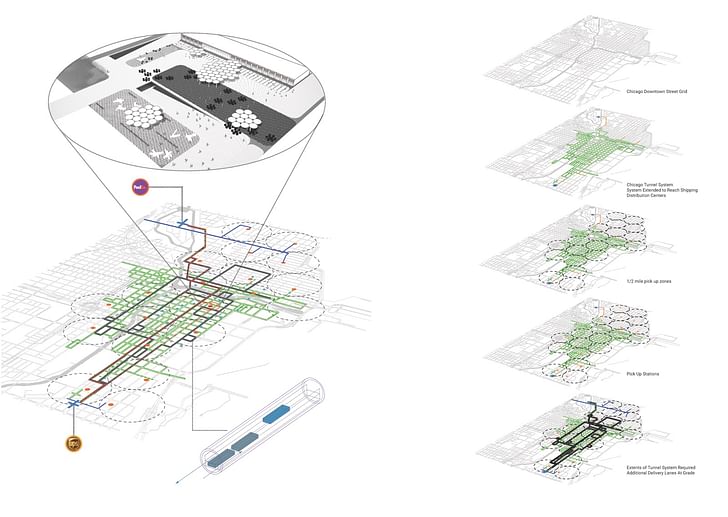
In May 2016, news broke that UPS is actively looking to develop (or possibly collaborate with) 3-D printing facilities to quickly provide goods on demand. Rather than outsourcing fabrication and assembly to locations around the world, companies would design and produce locally using 3-D technology to manufacture components and parts for a range of industries as well as commodities, from furniture to toys, for public consumption. That production, distribution, and delivery would no longer be merely integrated their purpose is not really to make life better, but to propel our desire to want more stuff, quickerbut combined into a simultaneous operation would certainly guarantee even faster turnaround times. However, a potentially more significant implication here is the shift in the supply chain from a global scattered model to a local or regional one, which pretty much bankrupts the current international pattern of supply and demand. In California, Zume Pizza uses algorithms and robots to supply fresh food to customers. Pizzas ordered online are half-cooked by robots in a facility and then baked (with custom toppings) in mobile ovens located in food trucks, which are simultaneously baking and delivering. New modes of transportation, especially “last-mile” delivery systems, will have an impact as the trend for direct delivery of material flows to the workplace and the home increases. In July 2016, Just Eat, Europe’s largest food delivery company, revealed plans to deploy self-driving robots for deliveries in London.
Overall, and if the evolution of trade networks in history is anything to go by, we can predict even more fluidity in the supply chain through further minimizations of the time-space gap between supply and consumption, reconfiguring (or possibly eliminating) storage space in the city. So while shelf life is shrinking as a result of today’s regimes of flow, tomorrow, with even more streamlined delivery systems, we face the possibility of there being no shelf life at all. But, before that, we might all have come around to the realization that storage flows in the commercial realm are nothing more than the complete manifestation of capitalism. The more goods and services corporate logistical networks can supply, the more we will likely demand. Despite the convenience of current storage flows in the city, their purpose is not really to make life better, but to propel our desire to want more stuff, quicker. After all, storage flows are nothing more than money flows in disguise.

Screen/Print is an experiment in translation across media, featuring a close-up digital look at printed architectural writing. Divorcing content from the physical page, the series lends a new perspective to nuanced architectural thought.
For this issue, we featured Harvard Design Magazine's 43rd issue, "Shelf Life".
Do you run an architectural publication? If you’d like to submit a piece of writing to Screen/Print, please send us a message.
Julia Ingalls is primarily an essayist. Her work has appeared or is forthcoming in Slate, Salon, Dwell, Guernica, The LA Weekly, The Nervous Breakdown, Forth, Trop, and 89.9 KCRW. She's into it.
No Comments
Block this user
Are you sure you want to block this user and hide all related comments throughout the site?
Archinect
This is your first comment on Archinect. Your comment will be visible once approved.